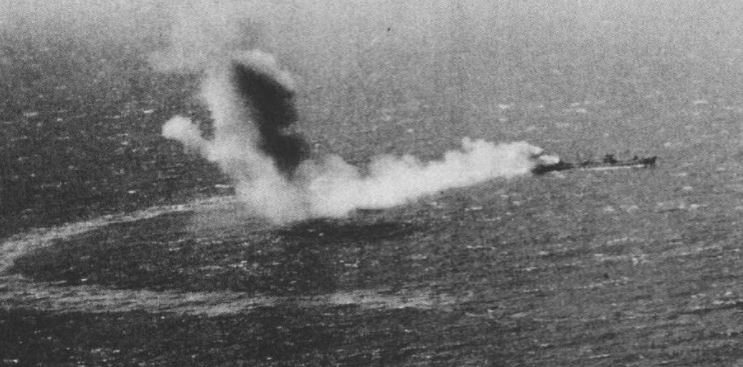This post covers our search rules for the Blood Red Skies campaign. These are key to getting the right ‘historical’ feel to a carrier vs carrier action because of the importance of locating the enemy and the uncertainty involved. Working off some real world historical events, we wanted to include:
- Going after the wrong target. At the Battle of the Coral Sea, both sides sent strikes at what they believed were the enemy fleet carriers, but the IJN hit a US oiler, and the US planes struck the light carrier Shoho. This is reflected in the rules by dummy ‘location fixes’ – if you attack one of them, you are heading for disappointment.
- The chance of a strike failing to connect with its target. At Midway most of Hornet’s strike force failed to locate the enemy. The rules mean that even if you strike the right target, you have to make a roll based on your bomber leader’s skill, and the number of ‘fixes’ you have, to actually attack the enemy carrier.
- Aircraft starting to run low on fuel and deciding how much longer to keep looking. At Midway some of the aircraft had to ditch because they had spent too long trying to find the enemy before turning back. If you fail the roll in #2 above, you can decide to ‘push it’ and re-roll, but you may lose some of the returning aircraft.
The uncertainty for both sides was also paramount. Neither side was completely sure whether either they had found the enemy, or whether their own position had been identified.
We stuck with the basic 3×3 grid from Ken’s rules, although in ours, all 9 squares are searchable locations representing the area where the enemy carrier is expected to be. At the start of each campaign day, each player secretly chooses a location for their carrier and writes it on their game sheet.
To determine the search success, each player has a pack of cards. Separate out all the diamonds and keep five of them. The other diamonds are not used in the game. Of these five diamonds, each player selects two to be dummies, and notes down their numbers. The three remaining diamonds are added to six random cards from the rest of the deck. This is the ‘correct square’ pile, containing three ‘location fixes’ and six ‘nothing founds’. The remainder of the pack (33 assorted non-diamonds plus two diamond ‘dummy location fixes’) is the ‘incorrect square’ pile.
Aircraft with multiple crew (generally the bombers) can then be used to search for the enemy carrier. All aircraft are allocated on the game sheet, which also includes CAP etc. They have enough fuel to search a map square for two turns of an hour each, and they can move to an adjacent square for their second turn of searching. You call out the squares that your aircraft are searching, and the enemy player gives you a card from either the ‘correct’ or ‘incorrect’ pile as appropriate (keeping secret which pile the card has come from). You don’t know if the ‘location fixes’ you find are real or dummies, and he doesn’t know if you’ve found anything yet. To simplify the game play, the pilot skill is not taken into account for the searching (as in Ken’s rules).
Once you have one or more location fixes, you can launch a strike. One is risky, two is adequate and three is ideal. The turn of your strike, you reveal which square you are attacking and how many ‘fix’ cards you have. You roll dice to locate the target – one dice for each skill level of your best bomber pilot, plus two dice for each location fix. If you get one 6, you have found it but the enemy player will get to reposition it during deployment, if you get two 6s, then it will be smack in the middle of the table. If you get no 6s then you can either return to your home carrier or go for a re-roll, but this will require pilot skill checks for returning aircraft, even if the second roll is also unsuccessful. Assuming you locate something, then enemy player will then reveal whether the location fixes were real or dummies.
Location fixes can also be obtained by other means – you get a ‘free’ one if your carrier is attacked, because the attacking aircraft will tend to give away the enemy position. Some of the carrier doctrines can also be used – for example ‘Submarine’ allows you to search a square each turn without aircraft.
In the next post I’ll cover the CAP and deployment.





Leave a Reply